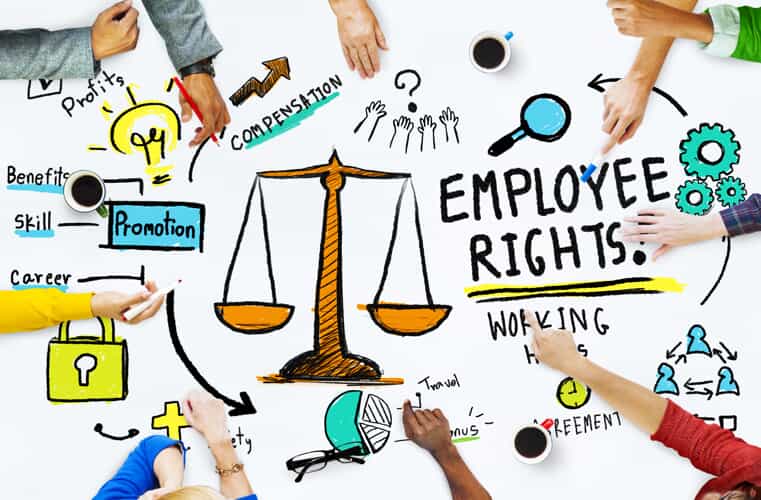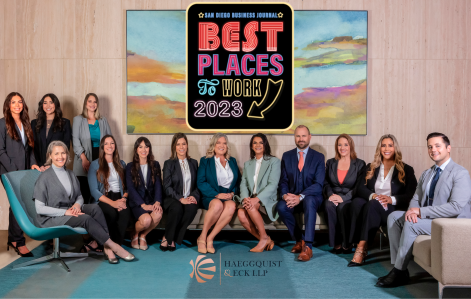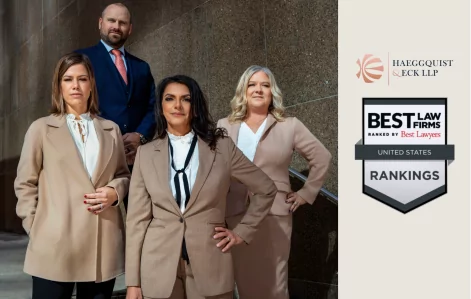On March 18, 2020, Congress passed the Families First Coronavirus Response Act (FFCRA), which will go into effect on April 1, 2020. It requires employers having 500 or less employees to pay sick and family leave to employees impacted by COVID-19 under certain circumstances. Our blog post here describes how employees may be entitled to paid sick and family leave under the FFCRA.
The FFCRA has an interesting interplay with existing leave laws, such as the Family and Medical Leave Act (FMLA), the California Family Rights Act (CFRA), California Paid Family Leave (PFL), and the Healthy Workplaces, Healthy Families Act (”HWHFA”). Employees and employers alike should know how this interaction between new and old laws will play out in the workplace.
Eligible employees impacted by COVID-19 may also qualify for benefits under the American Disabilities Act (ADA), California’s Fair Employment and Housing Act (FEHA), and California School Activities Leave (SAL), as well as State Disability Insurance (SDI) or Unemployment Insurance (UI).
The COVID-19 Paid Leave Act Does Not Diminish Any Entitled Rights
The FFCRA specifically states it does not “in any way diminish the rights or benefits that an employee is entitled to under” any other “Federal, State, or local law” or any collective bargaining agreement or existing employer policy. In other words, in addition to paid leave under the FFCRA, an eligible employee retains his or her leave rights and benefits under the FMLA, CFRA, PFL, HWHFA, and other related laws. But, how exactly does this work, and what does each law provide?
While some laws merely provide the right to time off work and job protection upon return (e.g., FMLA, CFRA), other laws provide no such job protection, but provide for pay while on leave (e.g., HWHFA and PFL). The FFCRA provides a little of both to eligible employees.
Family & Medical Leave Act & the California Family Rights Act
The FMLA is a federal law that provides eligible employees with up to 12 weeks of unpaid, job-protected leave per year. The CFRA is California’s equivalent of the FMLA and provides similar protections. These laws are designed to allow employees to take unpaid leave for certain family and medical reasons. They also apply to all public agencies, all public and private elementary and secondary schools, and companies with 50 or more employees.
Unpaid leave may be granted for the following reasons:
- To take medical leave when the employee is unable to work because of a “serious health condition”;
- To care for an immediate family member (i.e., spouse, child, or parent) with a “serious health condition”;
- For the birth and care of a newborn child of an employee;
- For placement with the employee of a child for adoption or foster care; or
- For military caregiver leave
Employees are eligible for leave if they have worked for their employer at least 12 months, at least 1,250 hours over the past 12 months, and work at a location where the company employs 50 or more employees within 75 miles. Upon return from an FMLA/CFRA leave, an employee must be restored to his or her original job or to an equivalent job.
Healthy Workplaces, Healthy Families Act
This law requires all California employers to provide eligible employees at least three days of paid sick leave. Note, however, that Los Angeles, San Diego, San Francisco, Santa Monica, Oakland, Berkeley, or Emeryville also have local ordinances requiring as much as six or nine days of sick leave per year.
Families First Coronavirus Response Act
This law provides both job protection and paid time off for eligible employees because of COVID-19. There are two relevant sections in this respect: (1) paid family leave; and (2) paid sick leave.
With respect to the paid family leave section, the law is simply a temporary expansion of the already existing FMLA (described above). Employees are eligible if they worked for the employer for at least 30 days prior to the designated leave.
For employees unable to telework, they may take up to 12 weeks of job-protected leave, but only for a single purpose: to care for the employee’s child (under 18 years of age) if the child’s school or place of care is closed or the childcare provider is unavailable due to a public health emergency.
The first 10-day period of leave is unpaid. After that, the employer must pay full-time employees two-thirds of the employee’s regular rate for the number of hours the employee would otherwise be normally scheduled. For part-time employees or employees working irregular schedules, they are entitled to be paid based on the average number of hours the employee worked for the six months prior to taking leave.
With respect to the paid sick leave section, it applies to any employee, regardless of his or her length of employment. An employee is entitled to 10 days of paid sick leave pay for six reasons, such as if the employment is subject to a federal, state, or local quarantine or isolation order related to COVID-19. See our blog post here for all six reasons and the amount of pay to which employees are entitled.
California Paid Fahttps://haelaw.com/blog/2020/march/employees-impacted-by-covid-19-you-may-be-entitl/mily Leave
PFL allows eligible employees to receive partial compensation for lost wages for up to six weeks in a 12-month period if they take time off from work to provide care for a seriously ill or injured family member (including grandparent, grandchild, sibling, or parent-in-law) or for bonding with a minor child within one year of the birth or placement of the child in connection with foster care or adoption. This includes leave to care for a family member who becomes seriously ill from COVID-19.
Despite the name, PFL is not a “leave” program; it does not provide employees with any entitlement to leave and it does not protect an employee’s job while he or she is out on leave. An employee may not be eligible for PFL benefits if he or she is receiving State Disability Insurance, Unemployment Compensation Insurance, or Workers’ Compensation benefits.
All claims for PFL benefits must be submitted directly to the Employment Development Department of the State of California. The EDD ultimately determines whether you receive FTDI benefits based on the serious health condition of certain family members that require your care. Benefit amounts are approximately 60-70 percent of wages (depending on income) and range from $50-$1,300 a week.
Interplay Between the Paid Sick & Leave Laws
The way COVID-19 impacts your employment will determine the leave and benefits to which you may be entitled.
Example 1 (School Closures): Under the FFCRA, if you need to stay home to care for your child because her school closed due to COVID-19, 10-days after you are required to stay home, you may be entitled to two-thirds of your pay for up to 12 weeks (if you are unable to telework). In this scenario, you may also be able to receive full pay for the first 10-days under the paid sick leave section of the FFCRA. After the 12 weeks are exhausted, if a stay at home or isolation order is still in effect requiring school closure and, thus, precluding you from reporting to the workplace, absent an employer policy stating otherwise, you may not be entitled to additional pay or protected leave, unless you or a family member falls ill to COVID-19 or has some other medical condition entitling you to job protected leave under the FMLA or CFRA.
Example 2 (Isolation Orders): If you are subject to a federal, state, or local quarantine or isolation order related to COVID-19, you may be eligible for up to two weeks of paid leave under the FFCRA if you are unable to telework, in addition to any unused paid sick leave you already receive through your company’s poilicies or the HWHFA. In California, Governor Newsom has issued an Isolation Order applying to all non-critical infrastructure sectors. After the two weeks of paid leave, you may not be entitled to additional pay due to an isolation order, unless you are also entitled to paid leave because you have to stay home to care for a child whose school has closed.
Example 3 (Sick from COVID-19): If you are experiencing COVID-19 symptoms and seeking medical diagnosis or advise from a health care provider to self-quarantine due to COVID-19 concerns, you may be eligible for up to two weeks of partial pay under the COVID-19 Act. After that, you are entitled to at least three days of paid sick leave under the HWHFA. If you are still suffering from a “serious health condition” because of COVID-19, you may be entitled to up to 12 weeks of job protected leave under the FMLA and CFRA if you are an eligible employee.
Example 4 (Caring for family member sick from COVID-19): If you are caring for an individual subject to a quarantine or isolation order or as advised by a healthcare provider, you may be eligible for up to two weeks of partial pay under the COVID-19 Act. If you are caring for an immediate family member with a serious health condition because of COVID-19, you may be entitled to up to 12 weeks of job protected leave under the FMLA and CFRA if you are an eligible employee.
Think You Need an Employment Lawyer’s Help?
If you believe your employer isn’t following the law, reach out to an employment law attorney to help you hold them accountable. Although there is a complicated interplay between California’s existing employment regulations and new ones in the FFCRA, your employer is responsible for upholding your rights at work.
If You feel you are being taken advantage of, reach out to Haeggquist & Eck, LLP to get the legal representation that can fight for your right to seek fair and just compensation.
Contact us online or call (619) 342-8000 to arrange a free initial consultation with one of our attorneys.





